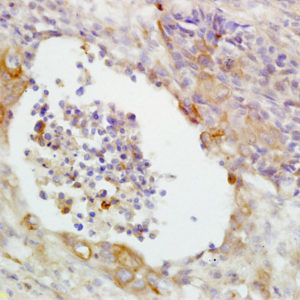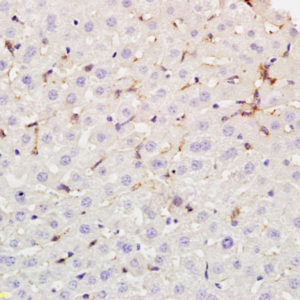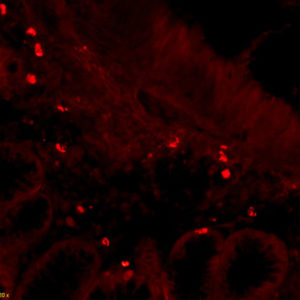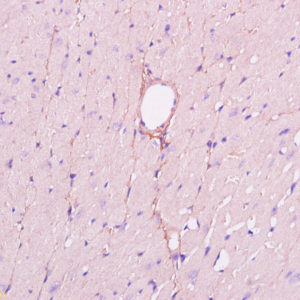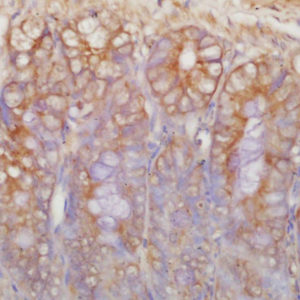| cross reaction |
Human,Mouse,Rat,Chicken,Pig,Cow,Horse,Rabbit,Sheep, |
| Product introduction |
background:
The charged multivesicular body proteins, commonly designated CHMPs, belong to the vacuolar sorting protein family and function as chromatin-modifying proteins. CHMP1-6 are all components of ESCRT (endosomal sorting complex required for transport) I, II or III complexes. These complexes are crucial for sorting endosomal articles into multivesicular bodies (MVBs), and are also required for the formation of these bodies. CHMP2B, also known as CHMP2.5 or vacuolar protein-sorting-associated protein 2-2, is a 213 amino acid cytosolic protein. Widely expressed in brain, heart, skeletal muscle, small intestine, pancreas, lung, placenta and leukocytes, CHMP2B associates directly with CHMP2A and vps4 for the disassembly of the ESCRT-III complex. Defects in the gene encoding CHMP2B have been shown to cause chromosome 3-linked frontotemporal dementia (FTD3).
Function:
Probable core component of the endosomal sorting required for transport complex III (ESCRT-III) which is involved in multivesicular bodies (MVBs) formation and sorting of endosomal cargo proteins into MVBs. MVBs contain intraluminal vesicles (ILVs) that are generated by invagination and scission from the limiting membrane of the endosome and mostly are delivered to lysosomes enabling degradation of membrane proteins, such as stimulated growth factor receptors, lysosomal enzymes and lipids. The MVB pathway appears to require the sequential function of ESCRT-O, -I,-II and -III complexes. ESCRT-III proteins mostly dissociate from the invaginating membrane before the ILV is released. The ESCRT machinery also functions in topologically equivalent membrane fission events, such as the terminal stages of cytokinesis and the budding of enveloped viruses (HIV-1 and other lentiviruses). ESCRT-III proteins are believed to mediate the necessary vesicle extrusion and/or membrane fission activities, possibly in conjunction with the AAA ATPase VPS4.
Subunit:
Probable core component of the endosomal sorting required for transport complex III (ESCRT-III). ESCRT-III components are thought to multimerize to form a flat lattice on the perimeter membrane of the endosome. Several assembly forms of ESCRT-III may exist that interact and act sequentally. Interacts with CHMP2A. Interacts with VPS4A. Interacts with VPS4B; the interaction is direct.
Tissue Specificity:
Widely expressed. Expressed in brain, heart, skeletal muscle, spleen, kidney, liver, small intestine, pancreas, lung, placenta and leukocytes. In brain, it is expressed in cerebellum, cerebral cortex, medulla, spinal chord, occipital lobe, frontal lobe, temporal lobe and putamen.
DISEASE:
Defects in CHMP2B are the cause of frontotemporal dementia, chromosome 3-linked (FTD3) [MIM:600795]. FTD3 is characterized by an onset of dementia in the late 50's initially characterized by behavioral and personality changes including apathy, restlessness, disinhibition and hyperorality, progressing to stereotyped behaviors, non-fluent aphasia, mutism and dystonia, with a marked lack of insight. The brains of individuals with FTD3 have no distinctive neuropathological features. They show global cortical and central atrophy, but no beta-amyloid deposits.Similarity:
Belongs to the SNF7 family.
Database links:
Entrez Gene: 25978 Human
Entrez Gene: 68942 Mouse
Omim: 609512 Human
SwissProt: Q9UQN3 Human
SwissProt: Q8BJF9 Mouse
Unigene: 476930 Human
Unigene: 432944 Mouse
Important Note:This product as supplied is intended for research use only, not for use in human, therapeutic or diagnostic applications. |



